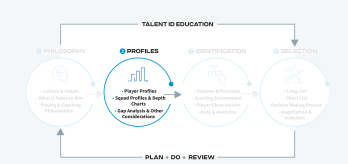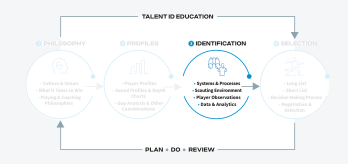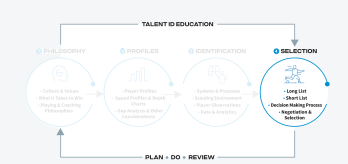A dependable talent identification system is crucial to the success of football clubs and other organisations within the sport. However, ensuring that system is both effective and efficient is a major challenge, and there is much discussion within the football community about the various approaches to doing so. In this presentation, Richard Allen introduces a multi-dimensional talent identification model that is intended to guide practitioners in their thinking and support them in developing a talent identification system they can rely on.
Watch video
Read summary
Part 1: The Talent ID Model, and lessons from the Ecosystem Analysis
Allen begins his introduction by setting out the aims of the Talent ID Model and the fundamental requirements for an effective talent development system. He then turns his attention to FIFA’s new Ecosystem Analysis, which he describes as the most comprehensive analysis FIFA member associations ever conducted. After discussing the overall approach behind this analysis, he concludes by considering how practitioners can use it to help them strengthen talent development infrastructure and encourage investment into these systems.
Part 2: The Talent ID Dimensions Model explained
The Talent ID Model is a multi-dimensional tool, and this part of the video explains what it looks like in practice. In this section, Allen elaborates on the model’s overall structure and how member associations can make use of its 4-step approach to talent education. Once he has explained the principles underlying the model, he moves on to think about some of the specific factors administrators may need to take into account when applying it to their circumstances. As he points out, no two member associations ever operate under the same conditions.
Part 3: Other important factors in talent ID
Allen returns to this issue at the beginning of Part 3, focusing on some of the key difference between bigger and smaller member associations. As he underlines, the fundamental principles of talent development do not change between countries, but the resources available to run the system do, as do population and geographical constraints. Whatever the operating environment, dedicated, passionate staff committed to spotting the most promising talent are crucial to success, and member associations need to ensure these staff are properly equipped to perform this key role.


















.variant64x64.png)
.variant348x164.png)